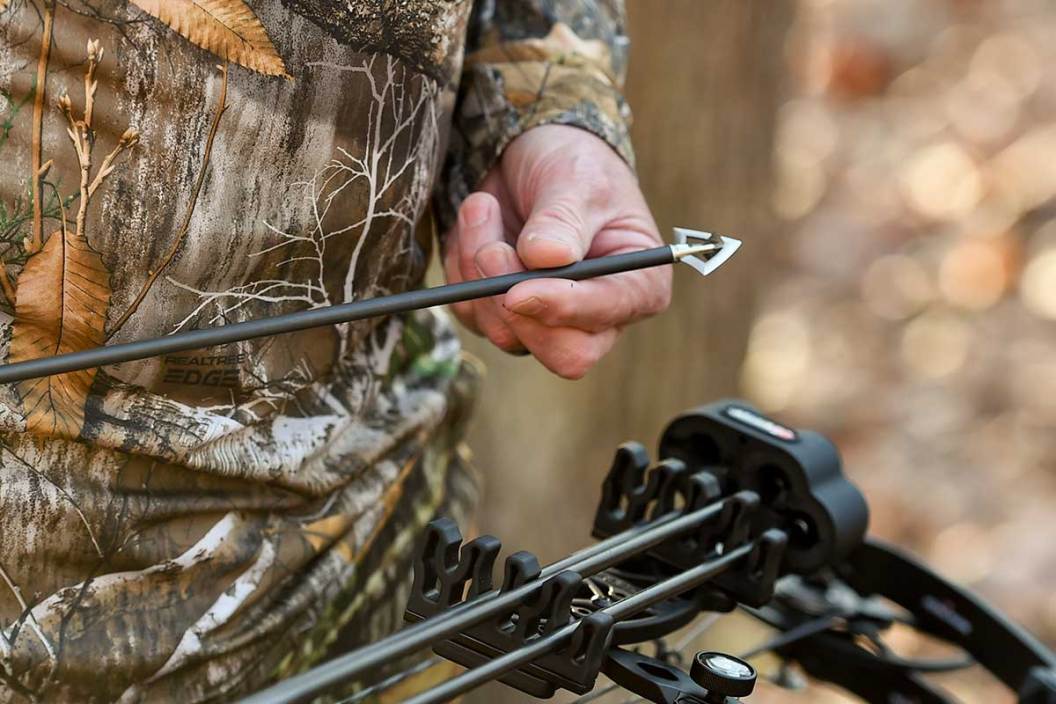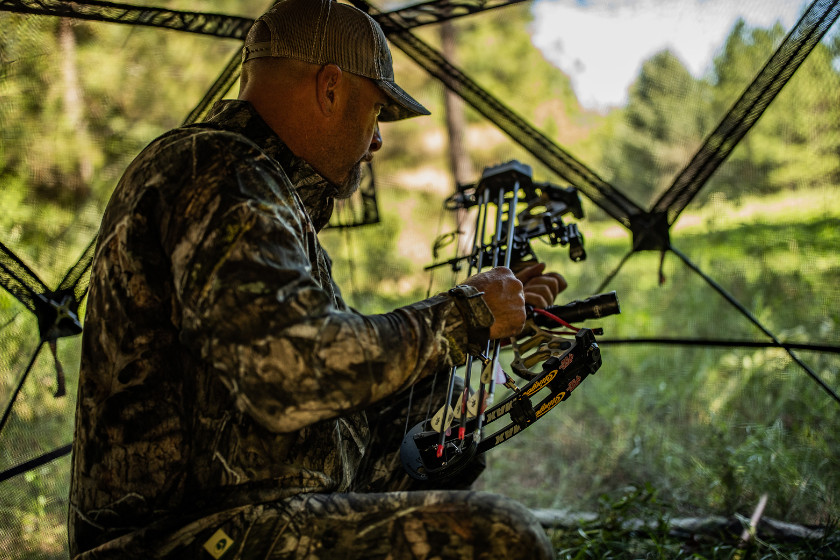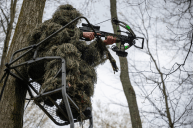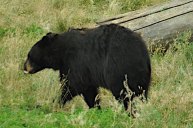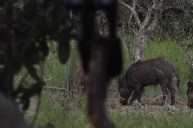It seems that in the world of archery deer hunters, we are always looking for new ways to improve on our hunting techniques. Sometimes, this can swing back and forth throughout the seasons. For example, I remember just three or four years ago that mechanical broadheads were seemingly the greatest innovation to ever be introduced to bowhunting. I showed up to deer camp last year with mechanicals and I was lectured for 30 minutes about how fixed blades are more effective.
It's natural that we strive to find ways for our bows to perform better, resulting in more ethical kills and better harvests in general. But in the past couple of years, it appears that what every bowhunter is talking about is heavy arrows. Are they really better for hunting purposes, or are there other factors that are more important? It's an interesting topic and one that I enjoy talking about with fellow hunters. I'll give my breakdown of the pros and cons that coincide with using a heavier arrow, at least from my experience, and let you determine your opinion about whether or not they'll work for you.
Heavy Arrow Pros

Getty Images: Banks Photos
Penetration and Momentum
If you have taken a physics class in high school or college, you know that weight plays a major role in the momentum of an object. Thus, the heavier the arrow, the more knockdown force you're going to obtain on the animal you're hunting. Every bowhunter knows that a pass through is something to strive for. An entry and exit wound leads to less clotting, which means there will be more blood and a faster recovery of the animal. Who doesn't want that?
There have been several arguments made about the ethics of shooting big game with a light arrow. That's especially applicable on a big game animal like elk, where deep penetration is crucial in order for the shot to be fatal. This isn't to say that using a light arrow won't result in a pass through, but shot placement will have to play more of a role. That idea leads me to my next point.
Shot Forgiveness
Tucking a shot right behind the front shoulder of a deer is the home run of the hunting world. Avid bowhunters practice every day so that when the opportunity comes to launch an arrow straight to the boiler room of a buck, we are ready. However, this doesn't always go as planned. There is a larger margin of error when it comes to bowhunting, and the slightest tweak can cause a shot to go from an intended fluid heart shot to being lodged in the scapula.
Using a heavier arrow provides more forgiveness on shots like this, as the force of the heavier arrow allows it to bust through the shoulder bone and still reach the heart. I have seen many hunters lose a deer because of a scapula shot, and a majority of the time that hunter was using a light arrow.
Bow Stress
There is a lot of stored energy that a bow creates as it is in full draw. As a result, the bow needs an object to transfer all that energy to. A perfect example of this is what happens when a bow is dry-fired. I hope many of you hunters have never witnessed this, as it is a depressing and scary sight. Without an arrow, when a bow is fired, all of that stored energy is transferred onto the limbs, cams, and riser of the bow, which can create some serious (even permanent) problems to the bow.
Studies have shown that using a heavier arrow allows for a better transfer of energy from the bow, which results in a longer bow life, a more fluid shot, and even less shot noise. That's crucial for accuracy, especially at long distances.
Heavy Arrow Cons
More Drop, Less Speed
Because the arrow is heavier, it's obvious that there is going to be steeper drop off in the velocity of the arrow. The same is true with bullets, and is compounded the further the shot is taken from. Consider a 6.5 Creedmoor versus a .45-70. The 120-grain 6.5 is going to travel at over 3,000 ft/s, while the .45-70 will be lucky to reach 2,000 ft/s with 300-grain bullets.
This drop can cause an issue when judging the range of a deer, as well as anticipating the movement of the animal between the time you shoot and the time the arrow makes contact. While this may not be as big of an issue at 20 yards, it will play a huge factor when hunting backcountry elk, taking shots well over 50 yards. There is a compromise you have to make between power and speed when considering choosing a heavy or lighter arrow.
Necessity
When deciding on whether or not you will use a heavy arrow, it's important to consider the game you are hunting and question the necessity of power over speed. The most commonly hunted big game animal in the United States is the whitetail deer, which weighs less than a third of that of an elk, and about a fourth of a moose.
Heavy arrows undoubtedly have a place in the hunting world, but I personally believe their importance leans more towards larger big game, where maximum power is not only suggested, but absolutely crucial. With whitetail deer being the most popular big game animal in nearly every state, heavier arrows don't need to be placed at the top of the priority list. At least that's my opinion.
Final Thoughts
The arrow weight that you choose will ultimately come down to your experience, what you feel comfortable with, and how your bow is set up. Both heavy and lighter arrows have their advantages and disadvantages. Like most things, there is a perfect balance for every hunter out there. Experiment with different arrows, learn from your harvests, and you'll find the right setup.
